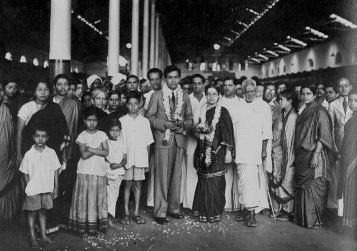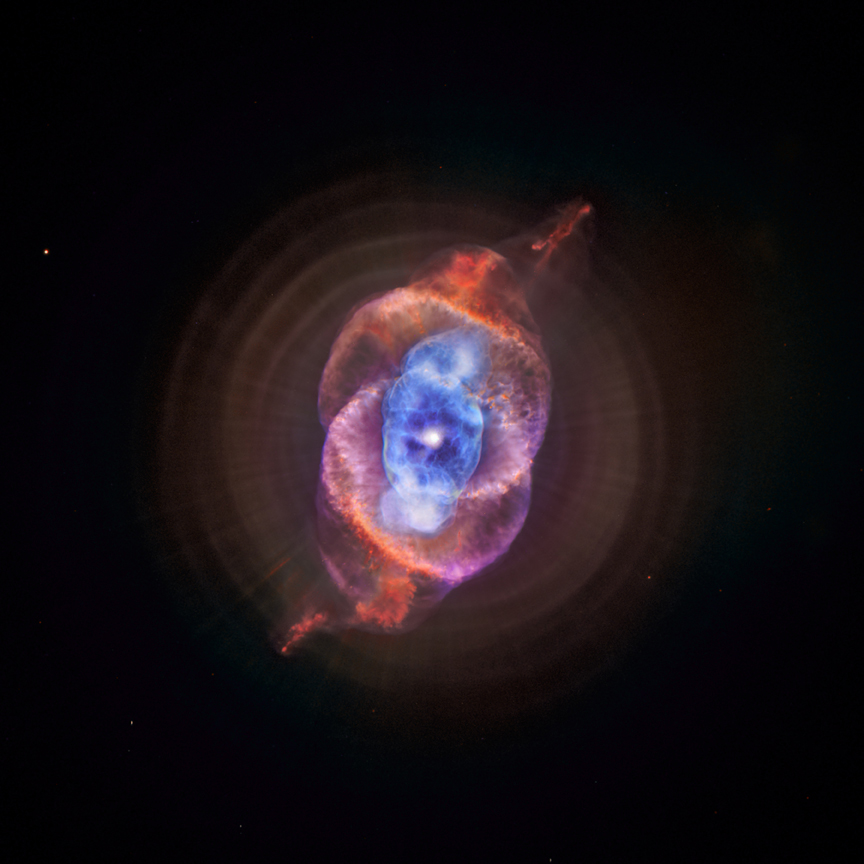at the Madras railway station (1936)






My self Sulekha Rani.R,P.G.T Chemistry,KV INS Dronacharya , Cochin, Kerala .
Superconductors go fractal.
Oxygen atoms arrange themselves in a self-similar pattern
Sulekha Rani.R , P.G.T Chemistry,
KV NTPC Kayamkulam
A new experiment using powerful X-ray beams has found a surprising pattern lurking in a superconductor, a material that conducts electricity without energy-sapping resistance. In a particular kind of superconductor, oxygen atoms are physically arranged as a fractal, showing the same pattern at small and large scales.
Fractals have been spotted in places as diverse as broccoli, England’s coastline and financial markets. Here, the fractal pattern boosts the efficiency of the superconductor, scientists report August 12 in Nature.
The new study is “experimental physics at its best,” says physicist Jan Zaanen of Leiden University in the Netherlands, who wrote an accompanying article in the journal. “A new machine comes on line, and it produces a surprise nobody expects.”
Though the researchers don’t yet know how the pattern forms or why it enhances superconductivity, they hope the discovery will help in the quest to develop superconductors that work at room temperature, says study coauthor Antonio Bianconi of Sapienza University of Rome. Physicists have been pushing to make superconductivity happen at higher temperatures, but the top performers are still stuck about halfway between absolute zero and room temperature.
Looking at a copper-oxide superconductor that can perform at approximately -233 degrees Celsius, Bianconi and his team developed a new technique to determine the detailed structure of its atoms. They bombarded the superconductor with powerful X-rays generated at the European Synchrotron Radiation Facility in Grenoble, France. The resulting diffraction pattern revealed atoms’ locations.
The team knew the material was made like a layered cake, with layers of superconducting copper oxide alternating with spacer layers. At higher temperatures, oxygen atoms tend to roam around in the spacer layer. But when temperatures drop, they settle down. These oxygen atoms — and the electrons they bring to what would otherwise be vacancies — are thought to contribute to the drop in resistance that accompanies superconductivity. But until now, no one had been able to see the structure with high resolution.
Bianconi and his team got a shock when they realized the pattern formed by the once-roaming oxygen atoms was fractal. The pattern looked the same at the 1-micrometer scale as it did at the 400-micrometer scale.
This self-similarity was completely unexpected in superconductors, Bianconi says. “We were very astonished. We couldn’t believe our eyes,” he says. “This is not an area where we expected to see a fractal pattern.”
To see whether the fractal pattern was important, the team interfered with it by heating and then quickly cooling the superconductor. Crystals with stronger fractal patterns performed better as a superconductor at higher temperatures than those with weaker fractal patterns. The fractal pattern enhanced the superconductor’s performance, the team concluded.
The finding is “very interesting, since it provides a much-welcomed fresh view of the high temperature superconductivity problem,” comments physicist Elbio Dagotto of the University of Tennessee in Knoxville and the Oak Ridge National Laboratory.
Figuring out why the fractal pattern forms in these copper-oxide crystals and how it influences the superconductivity are the next big questions, Bianconi says. Once the details are uncovered, researchers could control the arrangement of oxygen atoms to design better copper-oxide superconductors — perhaps even those that operate at room temperature.
Superheavy element 117.
Sulekha Rani.R, P.G.T Chemistry
KV NTPC Kayamkulam
Physicists have reported synthesizing element 117, the latest achievement in their quest to create “superheavy” elements in the laboratory. A paper describing the discovery has been accepted for publication in Physical Review Letters.
A team led by Yuri Oganessian of the Joint Institute for Nuclear Research in Dubna, Russia, reports smashing together calcium-48 — an isotope with 20 protons and 28 neutrons — and berkelium-249, which has 97 protons and 152 neutrons. The collisions spit out either three or four neutrons, creating two different isotopes of an element with 117 protons.
Sigurd Hofmann, a nuclear physicist at the GSI research center in Darmstadt, Germany, calls the new work on element 117 “convincing.”
Most elements heavier than uranium, which has 92 protons, do not exist stably in nature and must be made artificially in the laboratory.
The Russians collaborated with U.S. researchers, including from Vanderbilt University and Oak Ridge National Laboratory in Tennessee, where the berkelium target was made. Berkelium, with atomic number 97, is another of the rare artificially produced elements; the Russian team was able to obtain just 22 milligrams of it from Oak Ridge.
The researchers briefly spotted signs of element 117 during two runs of collisions lasting 70 days each. In their paper, the researchers report observing the heavier isotope of element 117 decay with a half-life of 78 milliseconds; they measured the lighter one’s half-life at 14 milliseconds.
The new element, which has yet to be named, slips into a place on the periodic table between elements 116 and 118, both of which have already been discovered. Such superheavy elements are usually very radioactive and decay away almost instantly. But many researchers think it is possible that even heavier elements may occupy an “island of stability” in which superheavy atoms stick around for a while.
The new work supports that view. Analyses of the new element’s radioactive decay, Oganessian’s team writes in the new paper, “represent an experimental verification for the existence of the predicted ‘Island of Stability’ for super-heavy elements.”
Hofmann says that one of the most interesting things about the new work is the different products that result when the two element 117 isotopes decay. The isotope with 177 neutrons decays down to dubnium (atomic number 105), whereas the isotope with 176 neutrons decays down to roentgenium (atomic number 111). Comparing the two chains, Hofmann says, will help researchers better understand the characteristics of superheavy elements.
Element 117 is tentatively known as ununseptium. After its existence is confirmed, it will receive a permanent name, suggested by the discoverers, from the International Union of Pure and Applied Chemistry – a process that can take some time. In February 2010, the IUPAC finally granted the name copernicium to element 112, which was first produced by Hofmann’s group in 1996.
| MADAM MARIE CURIE By Sulekha Rani.R,P.G.T Chemistry KV NTPC Kayamkulam AT A GLANCE: | |||||||||||||
| |||||||||||||
| |||||||||||||
| Milestones: The Story: Marie Sklodowska, as she was called before marriage, was born in Warsaw in 1867. Both her parents were teachers who believed deeply in the importance of education. Marie had her first lessons in physics and chemistry from her father. She had a brilliant aptitude for study and a great thirst for knowledge; however, advanced study was not possible for women in Poland. Marie dreamed of being able to study at the Sorbonne in Paris, but this was beyond the means of her family. To solve the problem, Marie and her elder sister, Bronya, came to an arrangement: Marie should go to work as a governess and help her sister with the money she managed to save so that Bronya could study medicine at the Sorbonne. When Bronya had taken her degree she, in her turn, would contribute to the cost of Marie's studies. So it was not until she was 24 that Marie came to Paris to study mathematics and physics. Bronya was now married to a doctor of Polish origin, and it was at Bronya's urgent invitation to come and live with them that Marie took the step of leaving for Paris. By then she had been away from her studies for six years, nor had she had any training in understanding rapidly spoken French. But her keen interest in studying and her joy at being at the Sorbonne with all its opportunities helped her surmount all difficulties. To save herself a two-hours' journey, she rented a little attic in the Quartier Latin. There the cold was so intense that at night she had to pile on everything she had in the way of clothing so as to be able to sleep. But as compensation for all her privations she had total freedom to be able to devote herself wholly to her studies. "It was like a new world opened to me, the world of science, which I was at last permitted to know in all liberty", she writes. And it was France's leading mathematicians and physicists whom she was able to go to hear, people with names we now encounter in the history of science: Marcel Brillouin, Paul Painlevé, Gabriel Lippmann, and Paul Appell. After two years, when she took her degree in physics in 1893, she headed the list of candidates and, in the following year, she came second in a degree in mathematics. After three years she had brilliantly passed examinations in physics and mathematics. Her goal was to take a teacher's diploma and then to return to Poland. | |||||||||||||